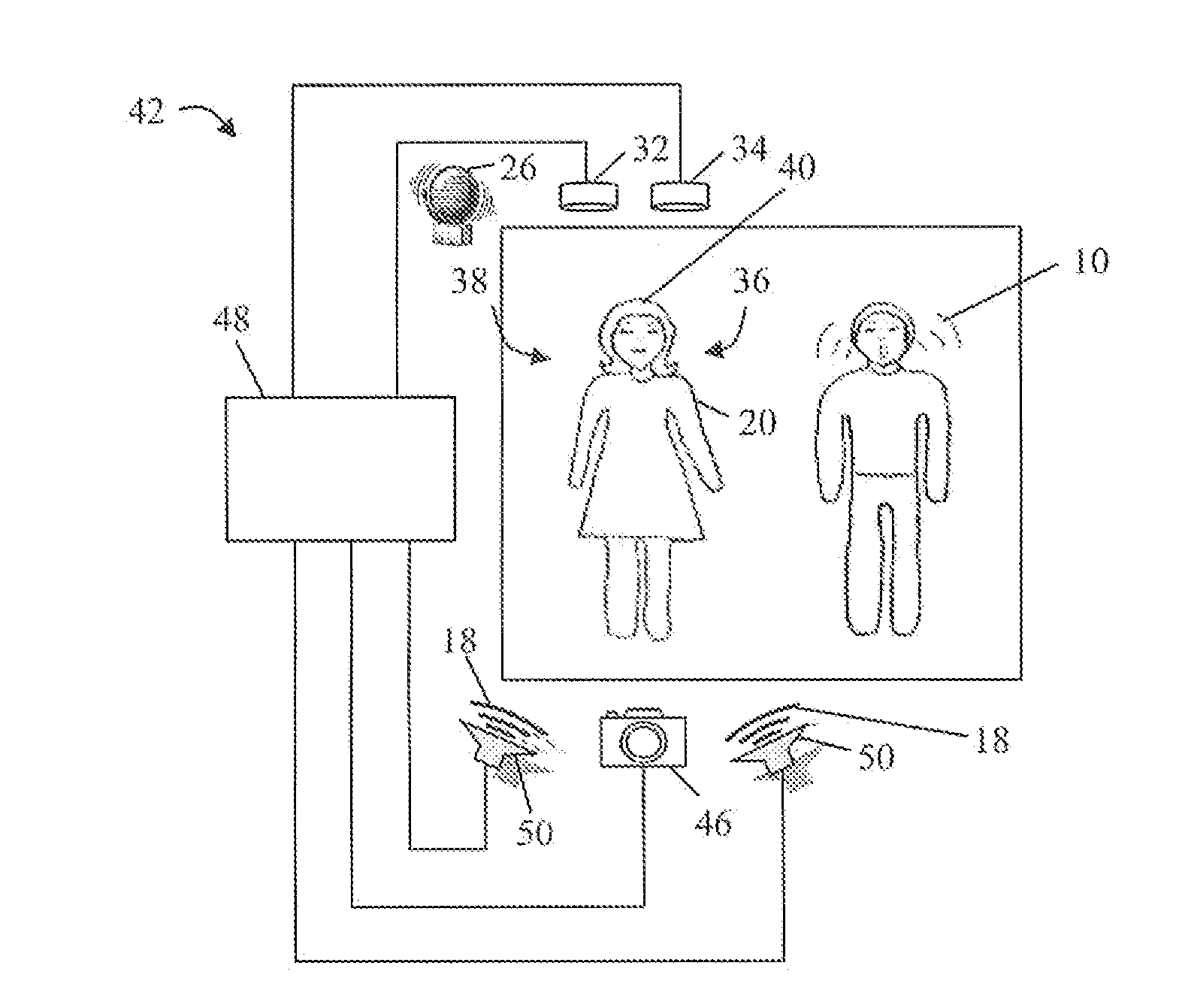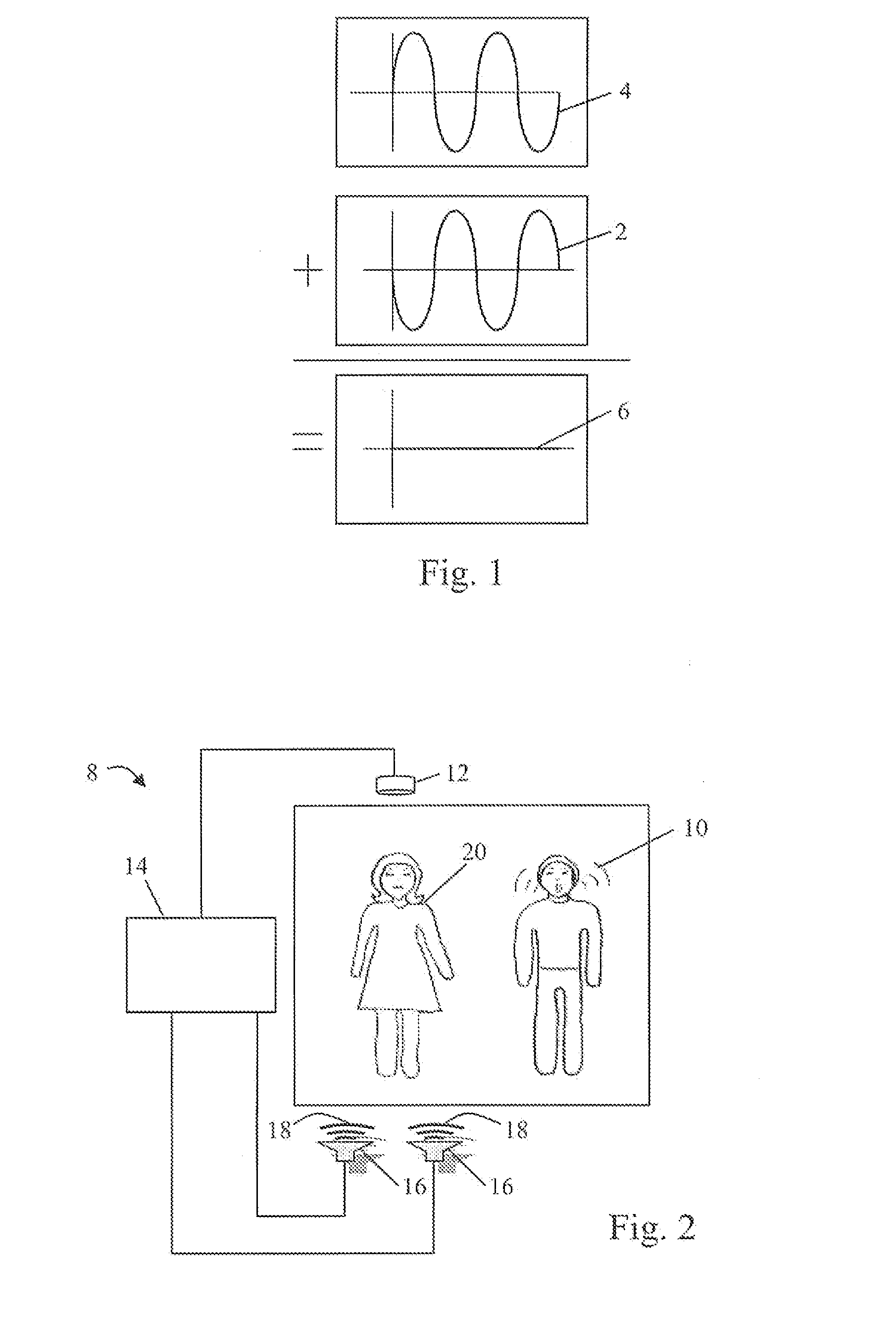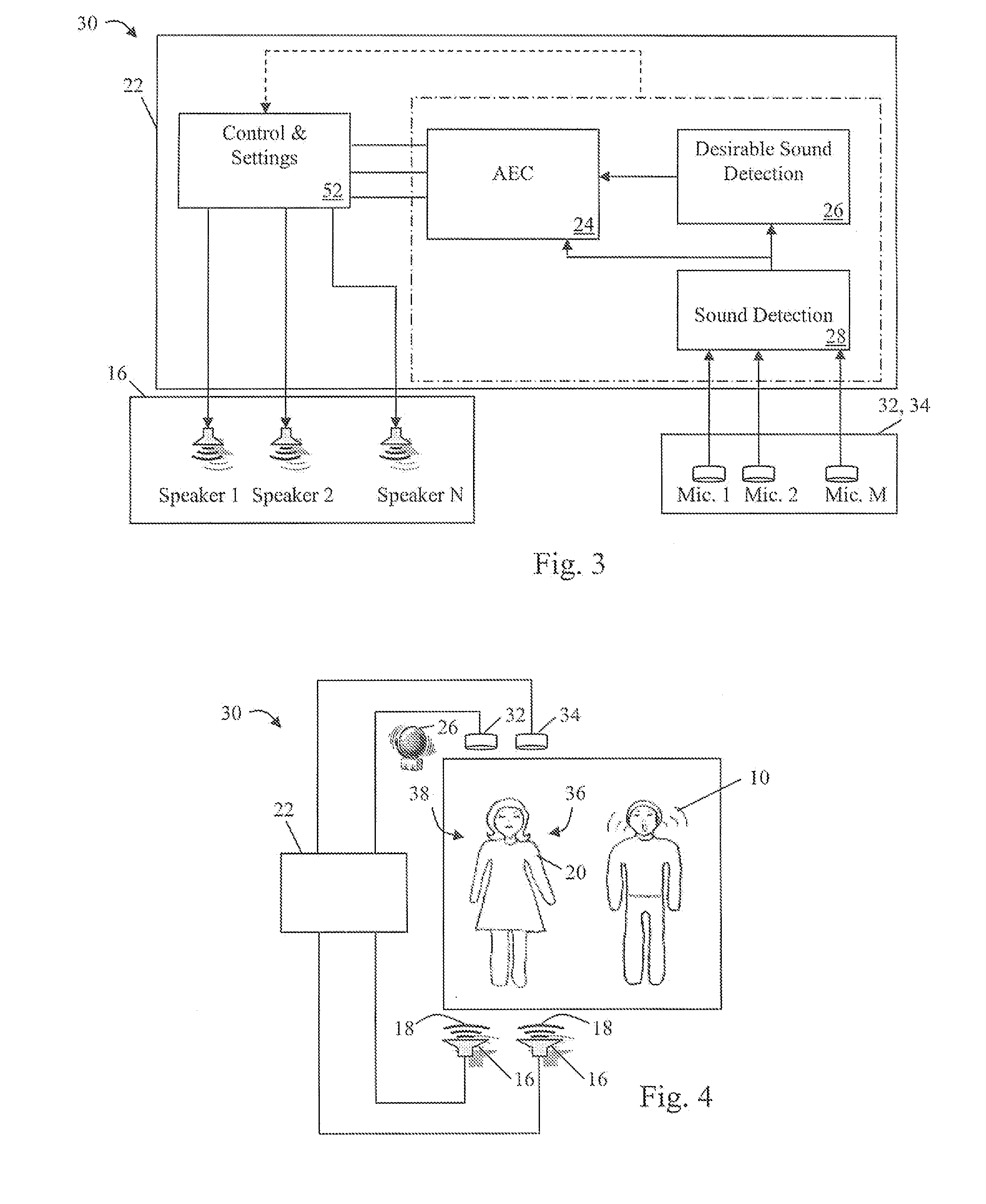System and method for noise cancellation with motion tracking capability
a technology of motion tracking and noise cancellation, applied in the field of system and method for noise cancellation with motion tracking capability, can solve the problems of perceived silence or adsorption of amplitude, and achieve the effect of maximum sound
- Summary
- Abstract
- Description
- Claims
- Application Information
AI Technical Summary
Benefits of technology
Problems solved by technology
Method used
Image
Examples
Embodiment Construction
[0014]Sound is transmitted as a pressure wave which consists of a compression phase and a decompression or rarefaction phase. When two sound waves pass through the same region of space at the same time, a phenomenon known as interference occurs. As shown in FIG. 1, if the two waves are opposite one another as they pass by, the result is called destructive interference or phase cancellation. For example, if a speaker emits a sound wave 2 with the same amplitude but 180° out-of-phase (or opposite polarity) with respect to an original sound wave 4, the waves combine to form a new wave 6 which effectively cancels each other out, potentially resulting in no sound or a sound wave that may be so faint as to be inaudible to human ears. Using the concept of destructive interference, a system 8 may be provided to receive an undesirable sound 10 (e.g. snoring, humming of electronics, traffic, etc.) via a microphone 12, analyze the waveform of the undesired sound via a processor 14, and generat...
PUM
 Login to View More
Login to View More Abstract
Description
Claims
Application Information
 Login to View More
Login to View More - R&D
- Intellectual Property
- Life Sciences
- Materials
- Tech Scout
- Unparalleled Data Quality
- Higher Quality Content
- 60% Fewer Hallucinations
Browse by: Latest US Patents, China's latest patents, Technical Efficacy Thesaurus, Application Domain, Technology Topic, Popular Technical Reports.
© 2025 PatSnap. All rights reserved.Legal|Privacy policy|Modern Slavery Act Transparency Statement|Sitemap|About US| Contact US: help@patsnap.com



